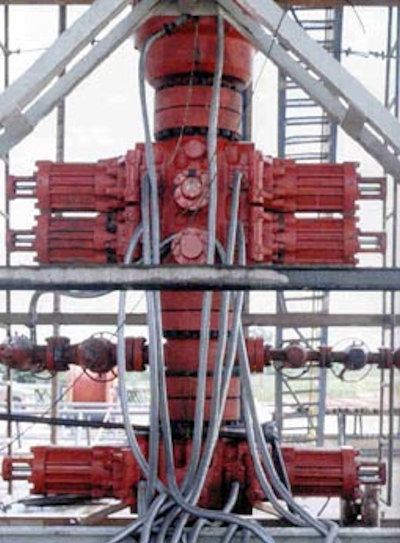Blowout Prevention Program (BPP)
The Blowout Prevention Program (BPP) is a critical safety plan designed to prevent uncontrolled releases of formation fluids during drilling operations.
Blowout Preventer Stack

The BPP outlines the proper selection, installation, testing, and maintenance of blowout preventers (BOPs) and related equipment. The program also includes detailed procedures for detecting and responding to well control incidents, ensuring the safety of personnel, protection of the environment, and the integrity of the drilling operation.
- Equipment Requirements: Specifications for BOPs, control systems, and auxiliary equipment.
- Installation Procedures: Guidelines for correctly installing all blowout prevention components at the well site.
- Testing Schedules: Regular pressure testing and inspections to ensure BOP systems are fully functional.
- Operational Procedures: Steps for managing well pressure and preventing kicks during drilling activities.
- Emergency Response Plans: Detailed actions for controlling blowouts and protecting workers and the environment.
- Training Requirements: Instruction and drills for personnel to handle well control situations effectively.
- Recordkeeping: Documentation of tests, maintenance, and training for compliance and review.
The first line of defense in well control is to have sufficient drilling fluid pressure in the well hole. During drilling, underground fluids such as gas, water, or oil under pressure (the formation pressure) opposes the drilling fluid pressure (mud pressure). If the formation pressure is greater than the mud pressure, there is the possibility of a blowout.
Blowout Preventer (BOP): A Blowout Preventer is a large, high-pressure safety device installed at the wellhead on a drilling site. Its main function is to control and seal the well in case of unexpected pressure surges, also known as kicks, which can lead to blowouts.
The BOP can close around the drill pipe, casing, or even seal the open hole. Its purpose is to protect workers, the environment, and equipment by preventing the uncontrolled release of oil, gas, or drilling fluids. It plays a critical role in well control and is tested regularly to ensure proper performance during emergencies.
Potential Hazards
- receiving injuries caused by loss of well control
Possible Solutions
- Appropriate training for tasks performed. Example topics include the following:
- causes of kicks, including detection
- pressure concepts and calculations
- well control procedures
- gas characteristics and behavior
- fluids
- constant bottom hole pressure well control methods
- well control equipment
- regulatory information
- Use of appropriate well control equipment including:
- specification
- installation
- maintenance
Knowledge Check Choose the best answer for the question.
9-2. In which of the following conditions is there a possibility of a blowout?
You forgot to answer the question!
